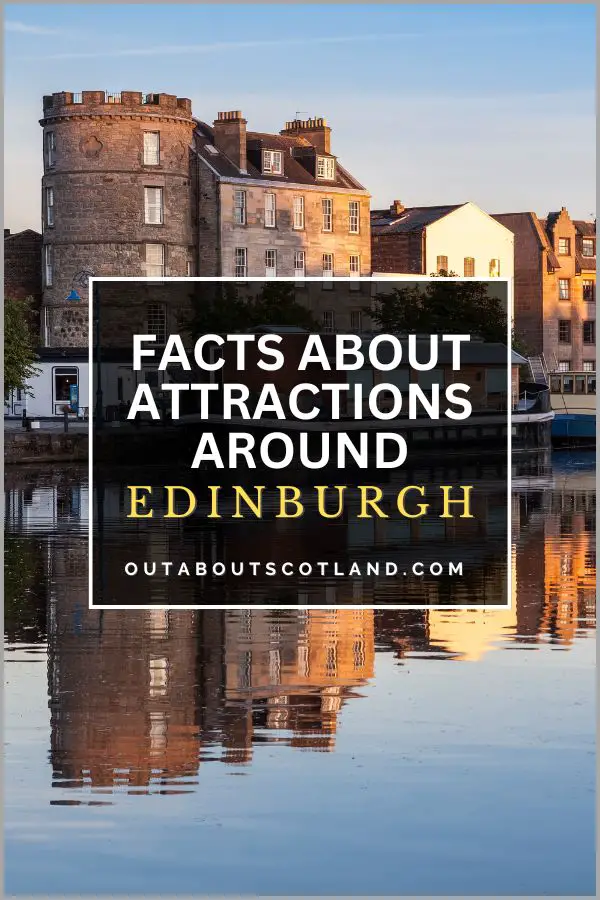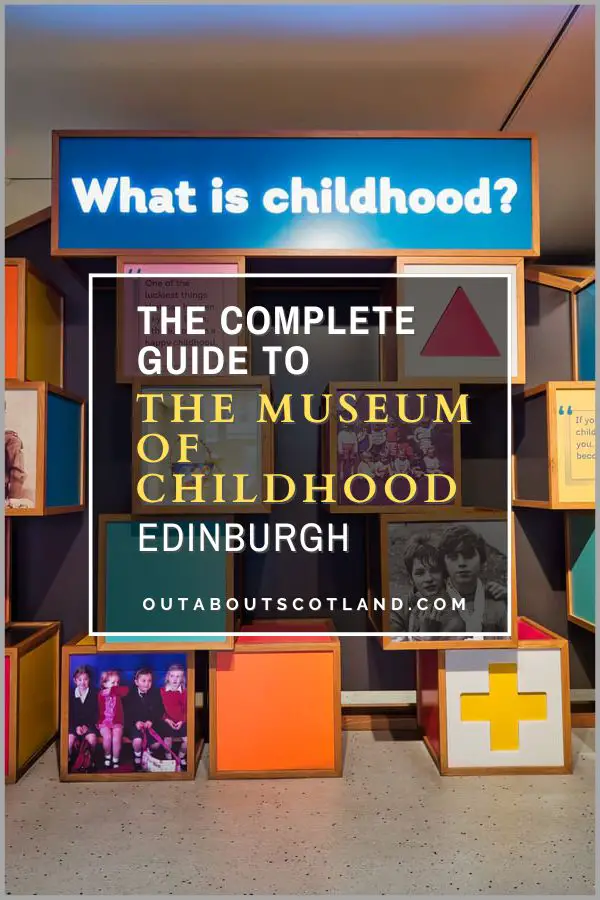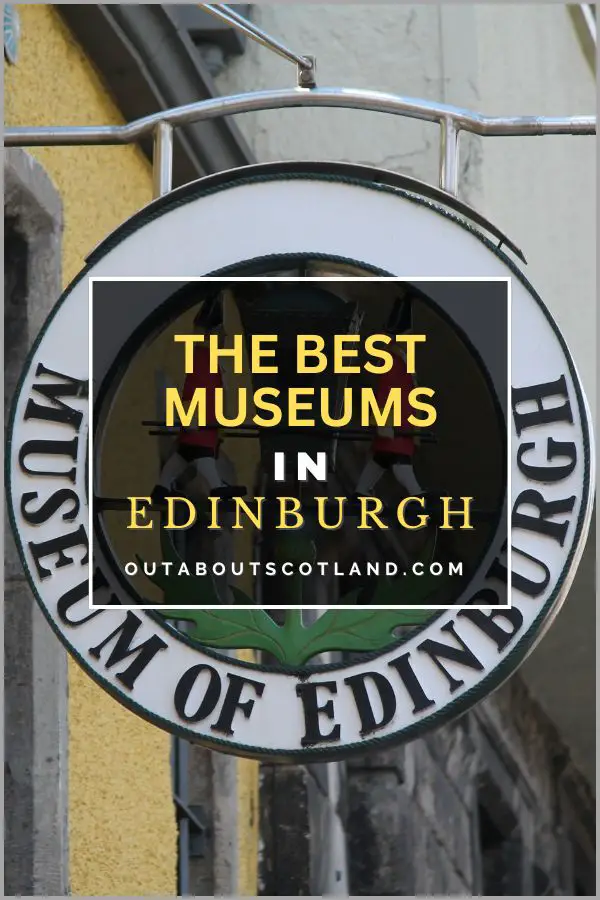It rains a lot in Edinburgh, especially in winter, so visitors need to know exactly where to go and what to do when the clouds inevitably turn grey. Discover the best things to do on a rainy day in Edinburgh with this guide, which includes top places to visit such as the Scottish National Gallery, the Camera Obscura, the Scotch Whisky Experience, and Edinburgh Castle.
Holyrood Palace
Address: Canongate, Edinburgh, EH8 8DX
Phone: NA
Out About Scotland visitor guide: Holyrood Palace
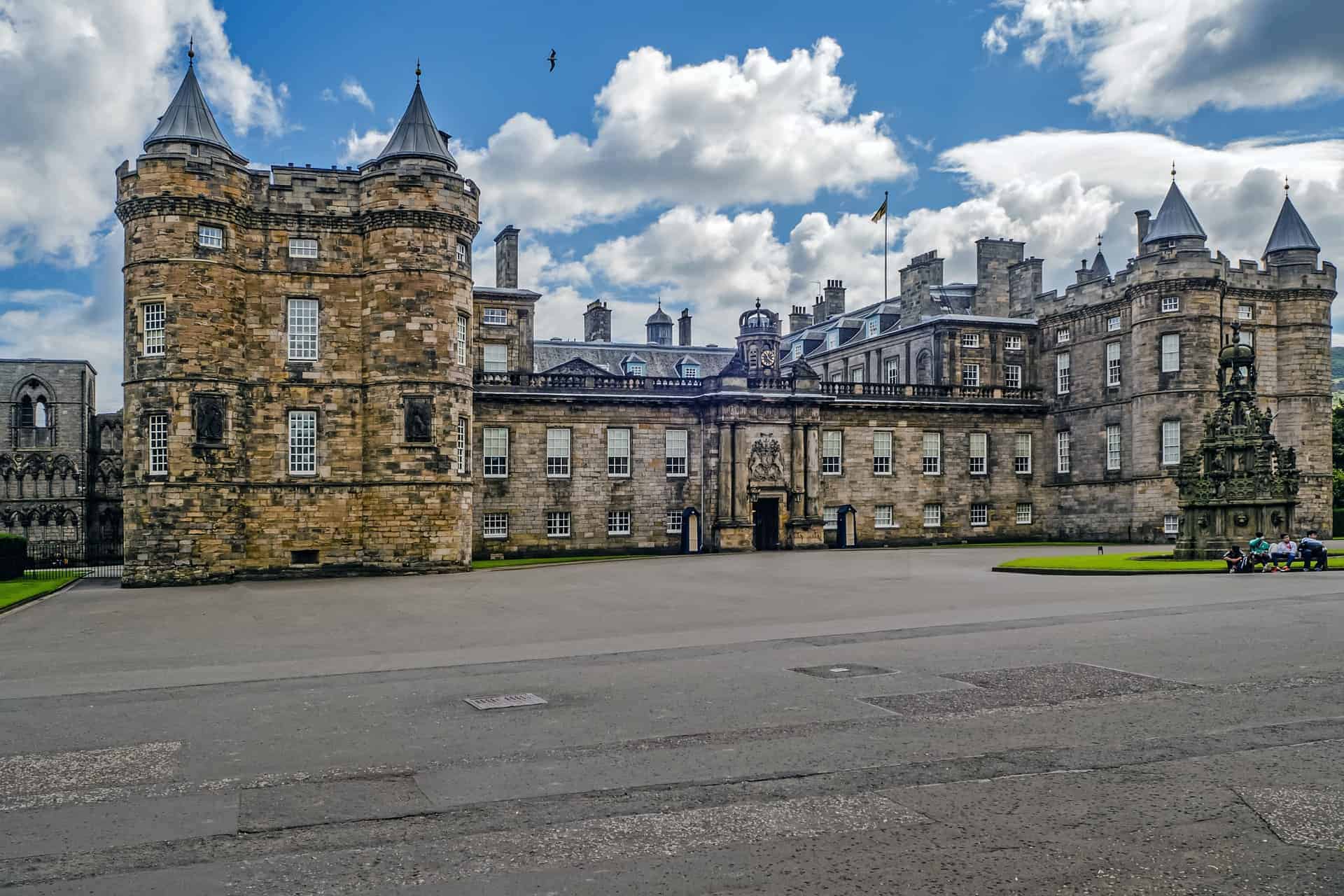
The Palace of Holyrood House (as it’s officially known) is the main residence of the British monarchy in Scotland, and it is located at the opposite end of the Royal Mile from Edinburgh Castle. The palace has a long history dating back to the 12th century, and it’s still used to host state occasions to this day.
The monarch spends one week at the palace at the beginning of each summer, and many tourists wait excitedly for the royal flag to be raised, which indicates they’re in residence.
Visitors can take a self-guided tour of the palace’s interior, where they will see the grand dining rooms, servants’ quarters, and Mary Queen of Scots’ royal apartments. After you’ve explored the inside of the palace, it’s time to walk around the outside (as long as those pesky rain clouds have cleared), where you’ll see some of the oldest buildings in Edinburgh.
Set over 10 acres, the palace grounds feature a stunning collection of roses, manicured lawns, and examples of Scottish plants laid out in the formal style of the 19th century.
Next to the castle are the ruins of Holyrood Abbey, which feature lots of interesting information panels, while across the courtyard lies the visitor centre. After you’ve been to the abbey, I recommend a visit to the royal café, which is, of course, top-notch. The quality of food on offer is amazing, and although it’s a little pricey, it’s well worth the expense.
A final point to note is that for an additional charge, you can visit the private art gallery of the royal family, which displays a collection of paintings that will never be displayed anywhere else. It’s completely optional, but it’s certainly worth a couple of extra pounds on the price of your entrance ticket.
Camera Obscura and World of Illusions
Address: Castlehill, Royal Mile, Edinburgh, EH1 2ND
Phone: 0131 226 3709
Out About Scotland visitor guide: Camera Obscura and World of Illusions
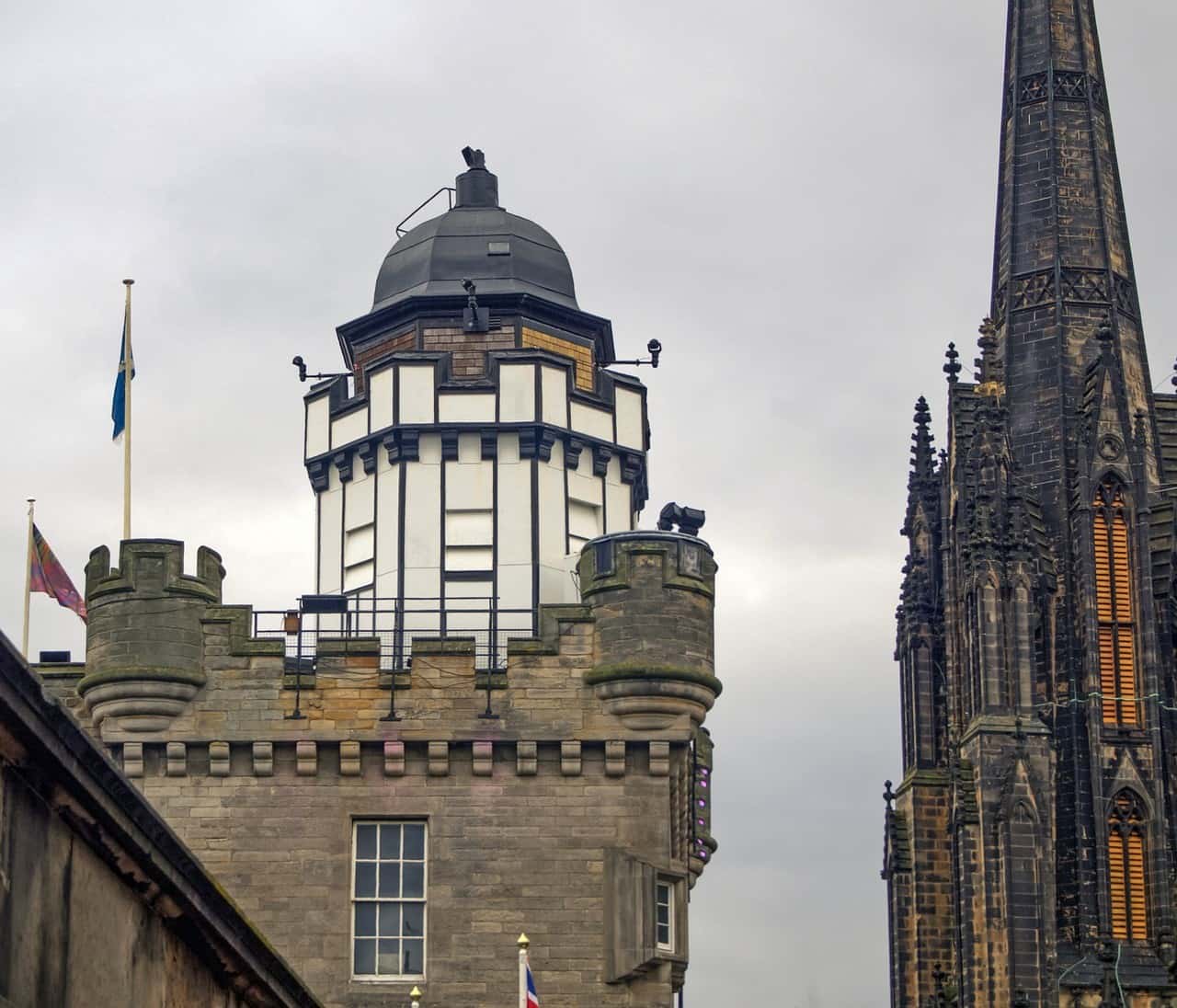
The Camera Obscura is one of the oldest purpose-built attractions in the United Kingdom, and tens of thousands of visitors pour through its doors each year. Camera Obscura and World of Illusions are located in a prime location on The Royal Mile, not far from Edinburgh Castle, and more or less opposite The Scotch Whisky Experience.
Visitors can explore six floors of interactive exhibitions that are designed to confound, confuse, and amuse in equal measure, with exhibits showcasing optical illusions using light and colour to enthral visitors of all ages.
There’s a section dedicated to holograms, another featuring a mirror maze, and yet another with a swirling vortex tunnel. Each area is designed to push your senses to the limit, and there is some extremely high-tech trickery powering many of the shows.
The Scottish National Gallery of Modern Art
Address: 75 Belford Rd., Edinburgh, EH4 3DR
Phone: 0131 624 6200
Out About Scotland visitor guide: The Scottish National Gallery of Modern Art
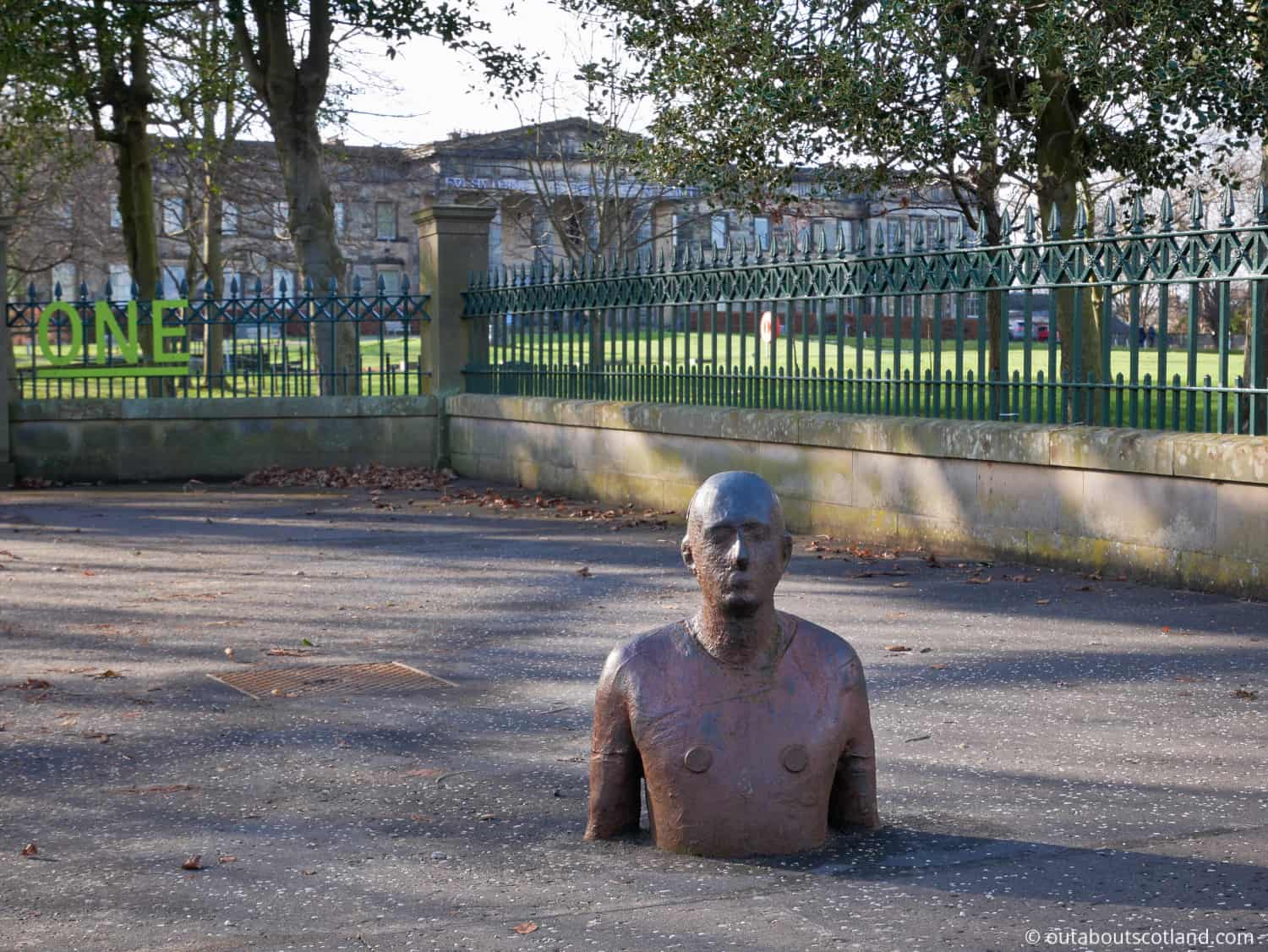
The National Galleries of Scotland controls three galleries housing great Scottish artworks, all of which are based in Edinburgh. While the Scottish National Gallery and Scottish National Portrait Gallery are easily accessible from the city centre, the Scottish National Gallery of Modern Art is located slightly further afield to the west of Dean Village.
Luckily for tourists trying to escape Edinburgh’s frequent downpours, there are regular bus services that ferry passengers between the galleries for no cost.
The journey to the gallery is well worth it, as not only is it spread out across two fascinating early 19th-century buildings, but the landscaped grounds are full of artworks that can be enjoyed in addition to the ones housed inside the main buildings.
The primary purpose of the gallery is to showcase the Scottish national collection of contemporary art dating from the early 20th century to the present day, and the collection covers all forms of media across 6,000 pieces, from paintings and video to sculpture.
This art gallery is a genuine feast for the senses, and many thought-inspiring artworks are guaranteed to give you cause for quiet contemplation. The combination of elaborate garden grounds and art exhibitions spread across the two buildings will keep you entertained for hours.
The Scottish National Portrait Gallery
Address: 1 Queen St, Edinburgh, EH2 1JD
Phone: 0131 624 6200
Out About Scotland visitor guide: The Scottish National Portrait Gallery
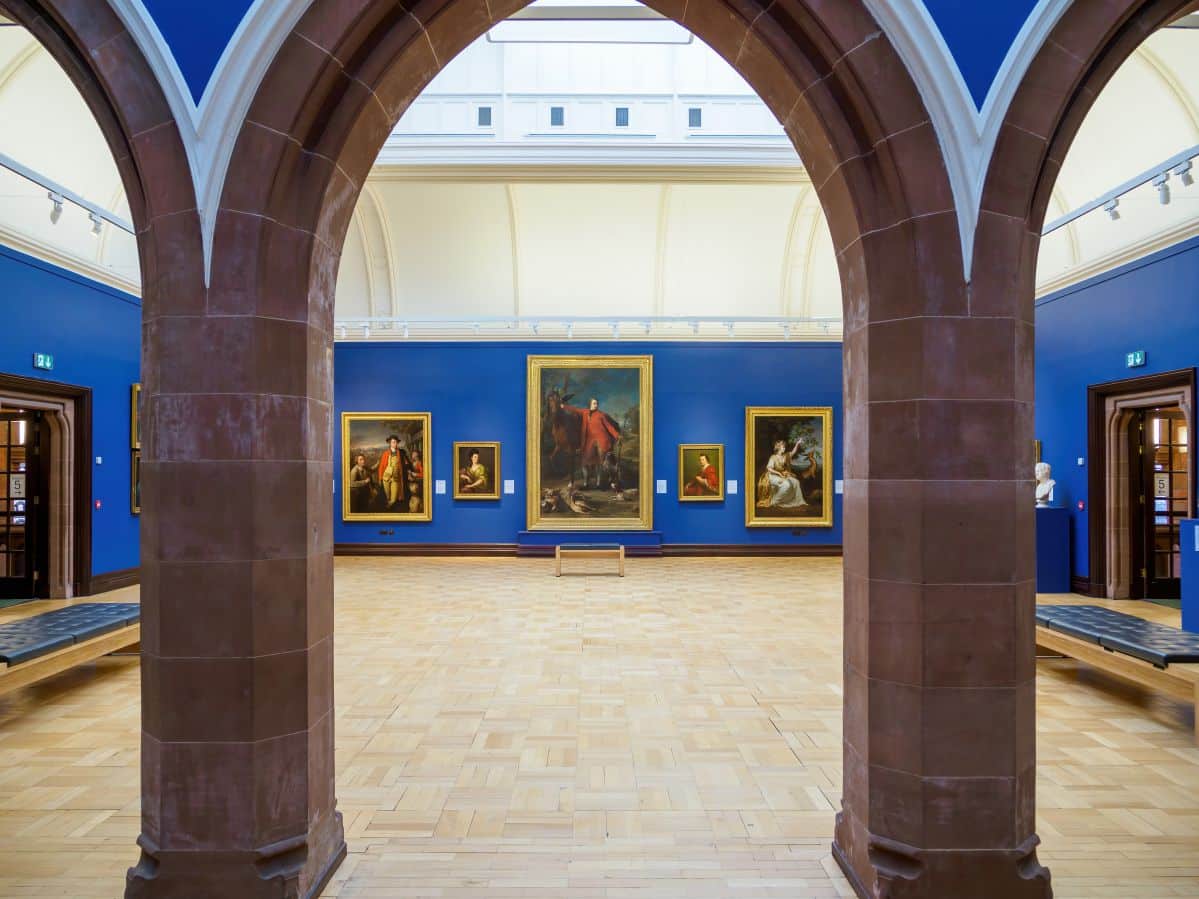
One of the best art galleries in Edinburgh is also one that can be easily overlooked by tourists, as the building is partly hidden between Queen Street and North St. Andrew Street.
It would be a shame to miss out on a visit to this attraction because the Scottish National Portrait Gallery contains the national collection of portraits as well as the national photography collection, both of which are studies of Scottish people throughout history.
In total, the collection boasts over 3,000 paintings and sculptures, plus 25,000 prints and drawings and 38,000 photographs, with the earliest portrait dating to 1507 and the oldest photograph dating to 1868.
The photos are particularly interesting as they show the life of the average working man in Scotland—something that’s often missing from earlier artworks—and these images give a fascinating glimpse into Scottish culture in the latter part of the 19th century. Before you go inside, take a look at the outside of the building, which features a collection of statues, including famous Scotsmen such as David Hume and Adam Smith.
Moving into the main entrance hall, you’ll see more influential Scots with a frieze that depicts people from Saint Ninian, the 5th-century Pictish missionary, to Robert Burns, the 18th-century Scottish poet and lyricist. The building then stretches out symmetrically on either side of the main hall, with the artwork distributed over three expansive floors.
The Scottish National Gallery
Address: The Mound, Edinburgh, EH2 2EL
Phone: 0131 624 6200
Out About Scotland visitor guide: The Scottish National Gallery
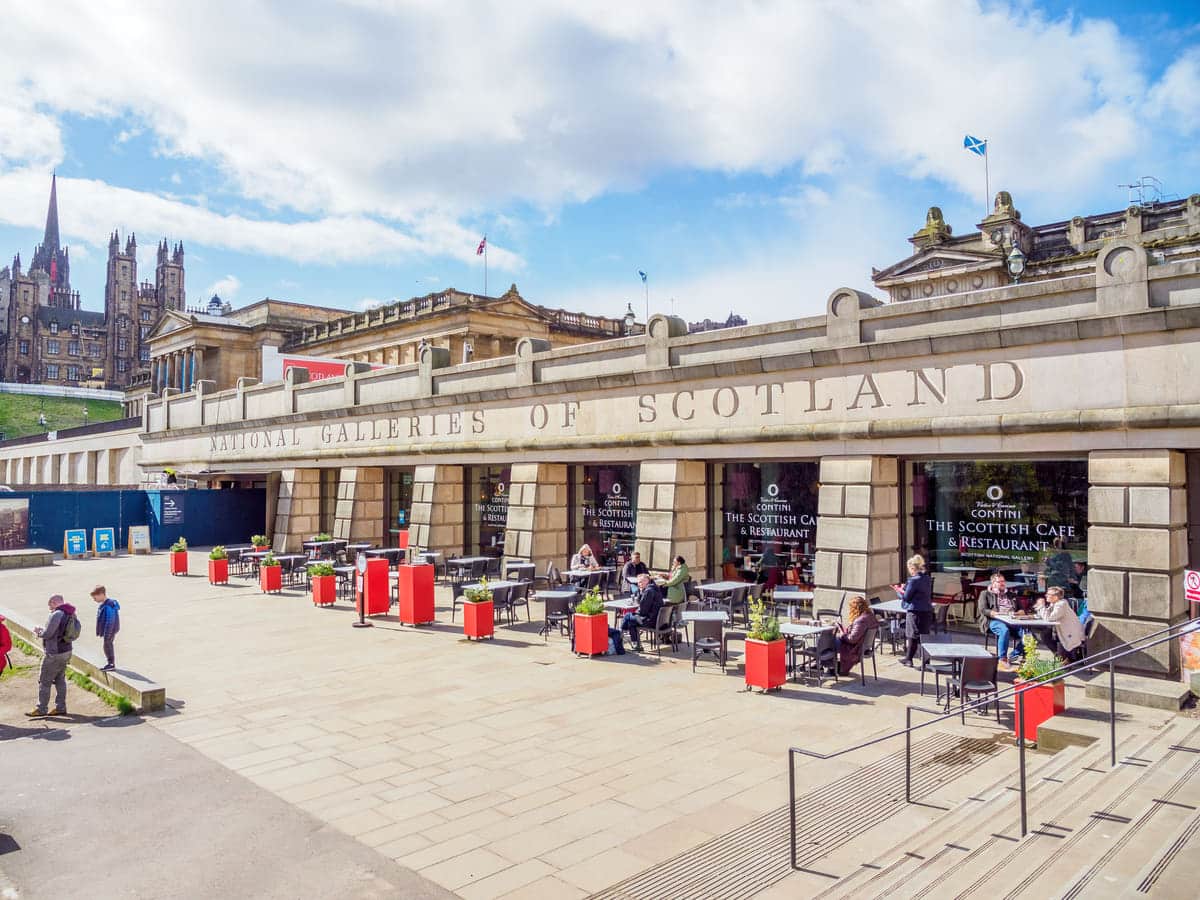
The Scottish National Gallery is virtually impossible to miss if you take a walk through the centre of Edinburgh because not only is it one of the biggest buildings in the city, but it dominates the ever-popular Princes Street Gardens. If you’re a new visitor to Edinburgh, you can’t help being impressed by the neoclassical gallery and the adjacent Royal Scottish Academy (RSA) building that sits behind it.
Both galleries have huge visitor numbers throughout the year, partly due to the quality of art on offer but also because it’s free to view these masterpieces (although there are charges for some temporary exhibitions).
The galleries display many of the most significant art collections in the world, including masterpieces by Rembrandt, Vermeer, Constable, Turner, Monet, and Van Gogh. Meanwhile, the biggest part of the collection covers the history of Scottish art, including works by Ramsay, Raeburn, Wilkie, and McTaggart.
There are too many artworks to mention in this article, but be sure to keep your eyes open for one particular Edinburgh favourite. This painting is the depiction of the Reverend Robert Walker skating on Duddingston Loch, an image that has woven itself into Edinburgh’s culture since Sir Henry Raeburn painted it in 1795.
You can pick up a high-quality replica of the painting (as well as many others) in the on-site souvenir shop.
The Scottish Parliament Building
Address: Edinburgh, EH99 1SP
Phone: 0131 348 5200
Out About Scotland visitor guide: The Scottish Parliament Building
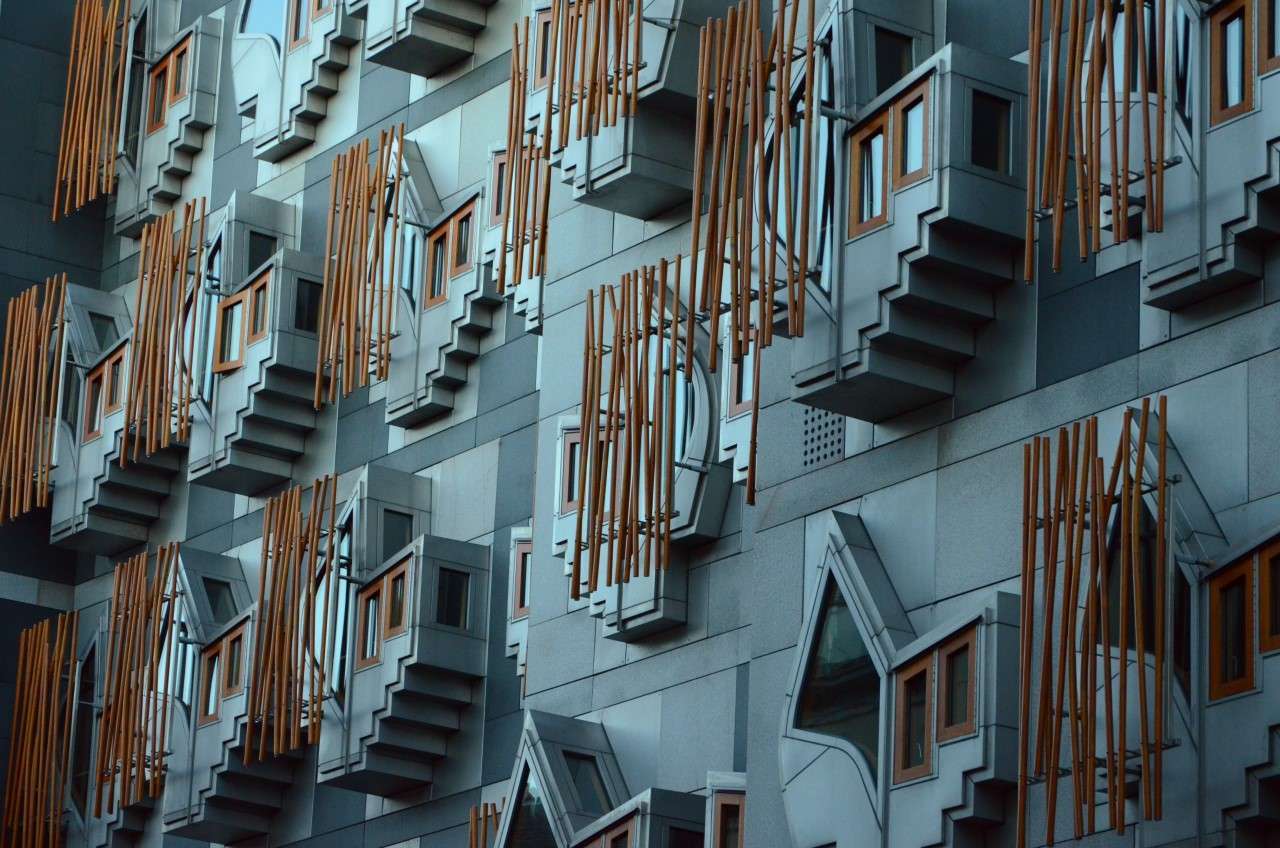
Completed in 2004, the Scottish Parliament building is the home of the Scottish government, and it’s a fascinating example of modern architecture. Located at the bottom of The Royal Mile on 4 acres of land, the building is perfectly situated as the seat of Scottish power, with the ancient Holyrood Palace directly opposite and the rolling peaks of Holyrood Park just a short walk away.
The building is in use daily with more than 1,000 permanent staff assisting 129 MSPs in their duties, and frequent debates are held in its central chamber, where viewing galleries allow 300 members of the public to watch important discussions about the state of the country.
Visitors can walk around the building on a self-guided tour, but there are also guided tours that explain the history of Scotland’s parliament. The Scottish Parliament Building is an unusual tourist attraction that’s certainly worth considering on a rainy day in Edinburgh.
John Knox House
Address: Scottish Storytelling Centre, High St, Edinburgh, EH1 1SR
Phone: 0131 556 9579
Out About Scotland visitor guide: John Knox House
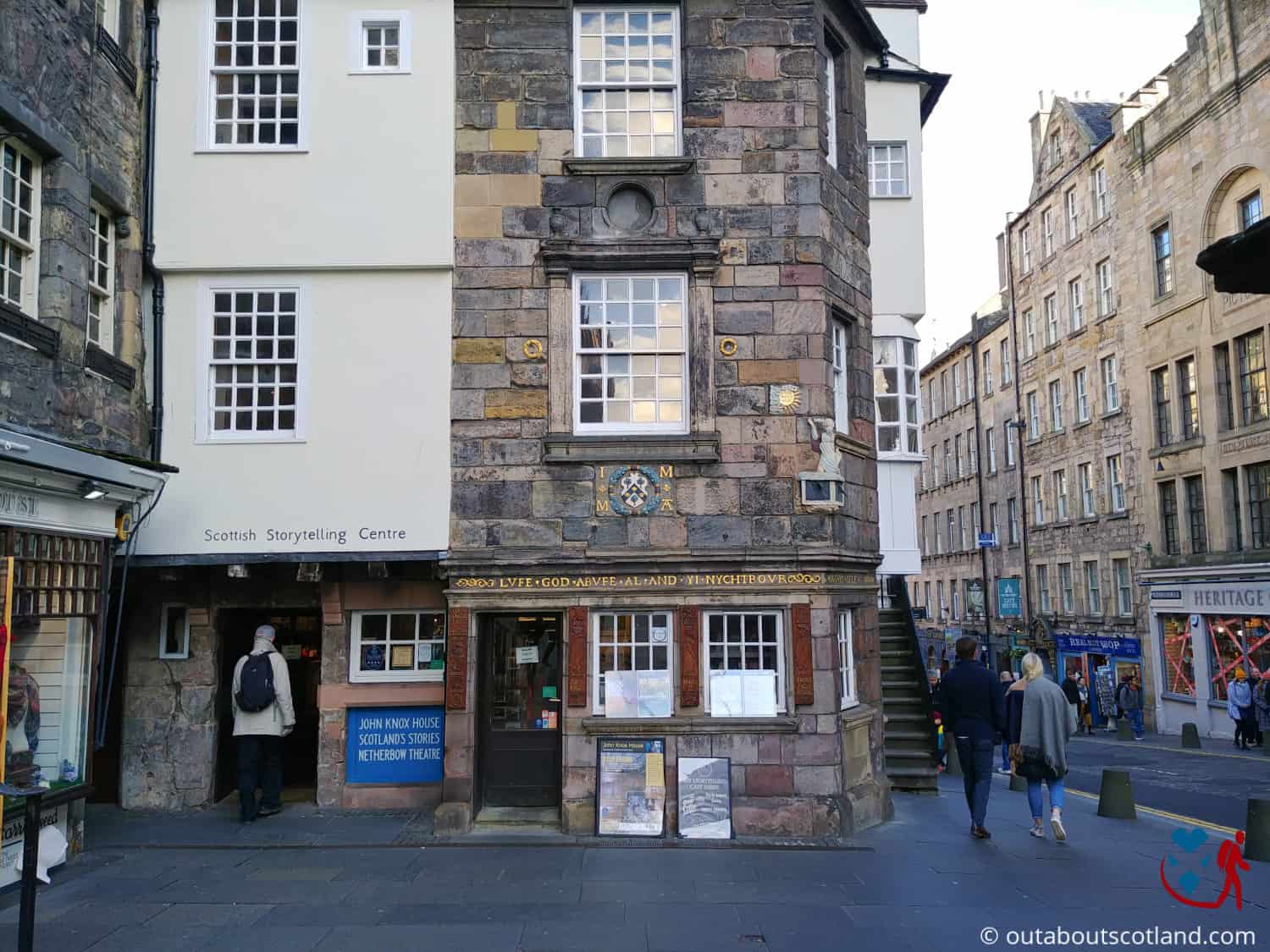
The renowned Protestant reformer John Knox resided in a historic building in the middle of the Royal Mile in the 16th century. Although John Knox only supposedly lived in the house for a short time, it’s his association with the building that prevented it from being demolished in 1840, a time when many other derelict buildings in Edinburgh were being torn down.
The house was built around 1470 which makes both it and the adjoining Moubray House the only surviving medieval buildings on The Royal Mile.
Today, the house is highly regarded for its museum exhibits, which include time capsules from the 1840s that describe how the house was saved from destruction and information panels that explain the story of the Scottish Reformation and the part that John Knox played in it.
Whether Knox spent much time in the house is a matter of debate. It’s unlikely that the Protestant Knox would have chosen to live there because it is known that a wealthy Catholic owned the house when he was alive.
Even so, the building would have been well-known to Knox while he was alive, mainly because it’s located so close to St. Giles Cathedral, where he spent his later years preaching sermons to the great and the good of Edinburgh.
Gladstones Land
Address: 477B Lawnmarket, Edinburgh, EH1 2NT
Phone: 0131 226 5856
Website: Gladstones Land
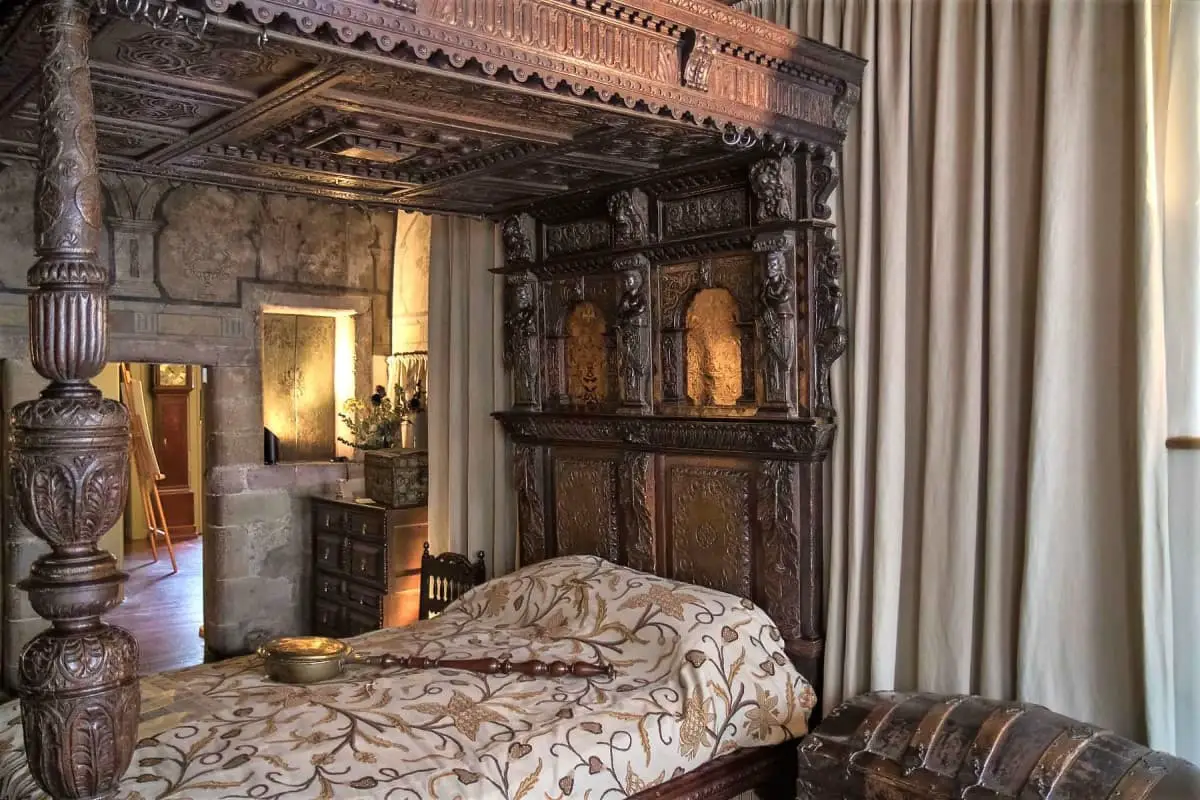
If you want to know how the residents of Edinburgh lived in the 16th century, Gladstones Land on the Royal Mile will give you a glimpse into their lives in a remarkable mediaeval building that has been restored to its original condition.
The National Trust for Scotland owns and is in charge of “The Land,” an old townhouse close to Edinburgh Castle. The trust has skillfully renovated the interior so that it now looks exactly like it would have in the early 1600s.
While the Georgian House in Edinburgh’s New Town provides a glimpse into the life of the wealthy in the 1700s, Gladstones Land transports you back in time even further to when both the rich and poor shared apartments in the ramshackle tenement buildings of the Old Town.
If you’d like to visit more Scottish historic buildings like Gladstones Land for free, I recommend getting a membership for the National Trust for Scotland.
St. Giles Cathedral
Address: High St, Edinburgh, EH1 1RE
Phone: 0131 226 0674
Out About Scotland visitor guide: St. Giles Cathedral
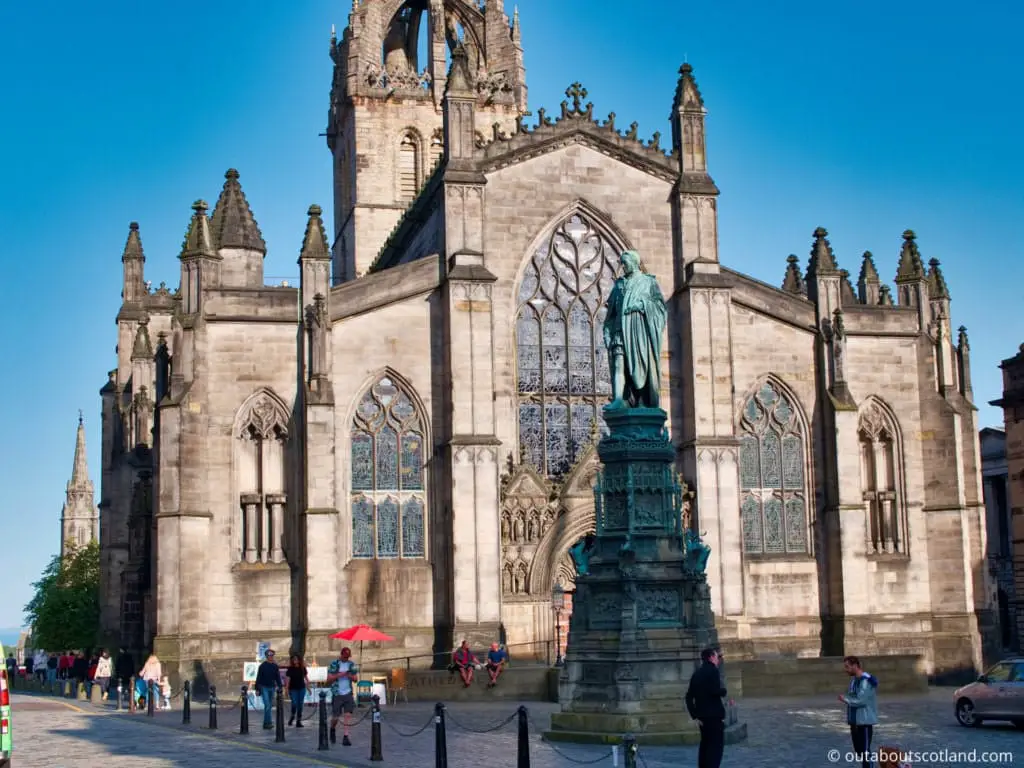
If you’ve ever looked through photographs of Edinburgh on the internet, there’s no doubt you’ll have come across a picture of Saint Giles Cathedral on the Royal Mile. Its distinctive 15th-century crown steeple is one of the most-viewed features of any building in the city, and it easily takes its place alongside Edinburgh Castle and Holyrood Palace as one of the most historically significant buildings in Scotland.
The cathedral has been a focal point for religious activity in Edinburgh for over 900 years, although the building that we see today can trace its roots back to the 14th century.
Due to its central location on the Royal Mile, St. Giles has become a popular tourist attraction, and it’s an ideal stop-off point between walks to Holyrood Palace and Edinburgh Castle. Although the cathedral has been officially designated as an A-listed building and is of great historical importance, it’s not, in the truest sense of the word, an actual cathedral.
As the Church of Scotland doesn’t officially have either bishops or cathedrals, St. Giles is often referred to in its much older title as the ‘High Kirk’.
There are lots of points of interest in St. Giles Cathedral, such as the four enormous 12th-century central stone pillars that are all that remain of an earlier cathedral that was ravaged by fire and a plaque in the car park that commemorates the gravesite of John Knox.
This has to be one of the most interesting historic attractions in Edinburgh, and it’s a great place to head when it starts raining because admission is free.
The Georgian House
Address: 7 Charlotte Square, Edinburgh, EH2 4DR
Phone: 0131 225 2160
Website: The Georgian House
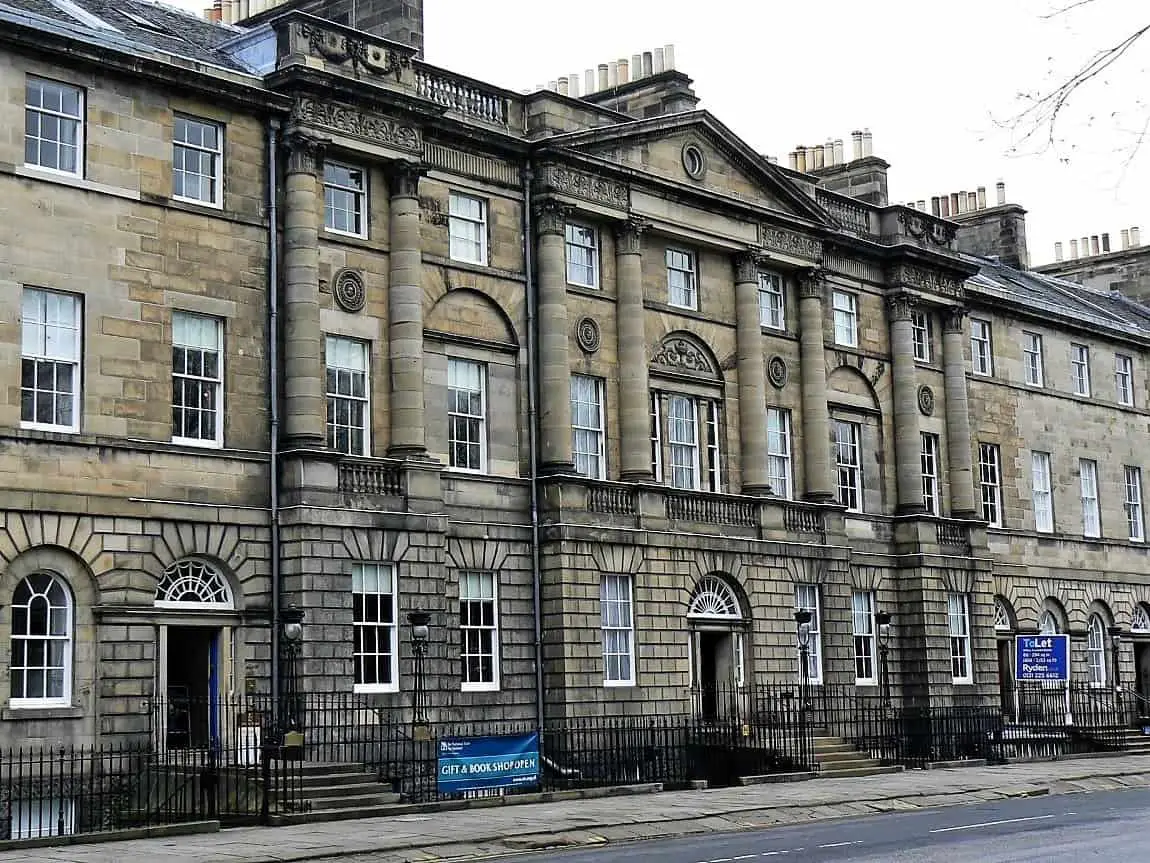
The Georgian House is a townhouse that was originally built in 1796 as part of Edinburgh’s fashionable New Town development. The New Town is considered to be a masterpiece of town planning design and has been designated a UNESCO World Heritage Site for the quality of its Georgian architecture.
In the late 17th century, the high-rise tenement buildings of Edinburgh’s Old Town were becoming diseased and filthy, with the city’s poor and destitute mixing alongside the wealthy gentry. To attract more rich people to Edinburgh, James VII created a new residential area to the north to encourage business owners and intellectuals to settle down and make permanent homes in the city.
It was left to the architect James Craig to come up with a design for the New Town, and he proposed a simple grid style with the main road of George Street (named after King George III) linking two large gardens at either end.
To the west end of George Street is Charlotte Square, a large area of private gardens that mirrors St. Andrews Square to the east, and it’s within the buildings that surround the square that you’ll find the Georgian House at building number 7.
This 18th-century townhouse was built to accommodate the rich who could afford to escape the dilapidated Old Town, and over the course of 170 years, from 1796 to 1966, a total of 5 wealthy families called 7 Charlotte Square their home.
Today, it’s owned and managed by the National Trust for Scotland, which has restored the interior so that it closely resembles the layout of how it would have looked when it was first used as a family home over 200 years ago.
Frequently Asked Questions
What is the coldest month in Edinburgh?
The coldest months in Edinburgh (and Scotland in general) are January and February, when temperatures vary between 1°C and 7°C.
Does it snow in Edinburgh?
The likeliest time for snow in Edinburgh is February, although there are occasional flurries in January and March as well. On average, there is snow for around 22 days each year in Edinburgh, with a total depth of 18 inches.
How much does it rain in Edinburgh?
On average, October is the wettest month in Edinburgh with 3 inches of rainfall, while April is the driest with 1 1/2 inches of rainfall. The average total annual rainfall for Edinburgh is 28 inches.
What is the sunniest month in Edinburgh?
On average, the sunniest month in Edinburgh is May, which sees around 200 hours of sunshine, compared to December, which sees around 50 hours of sunshine.



